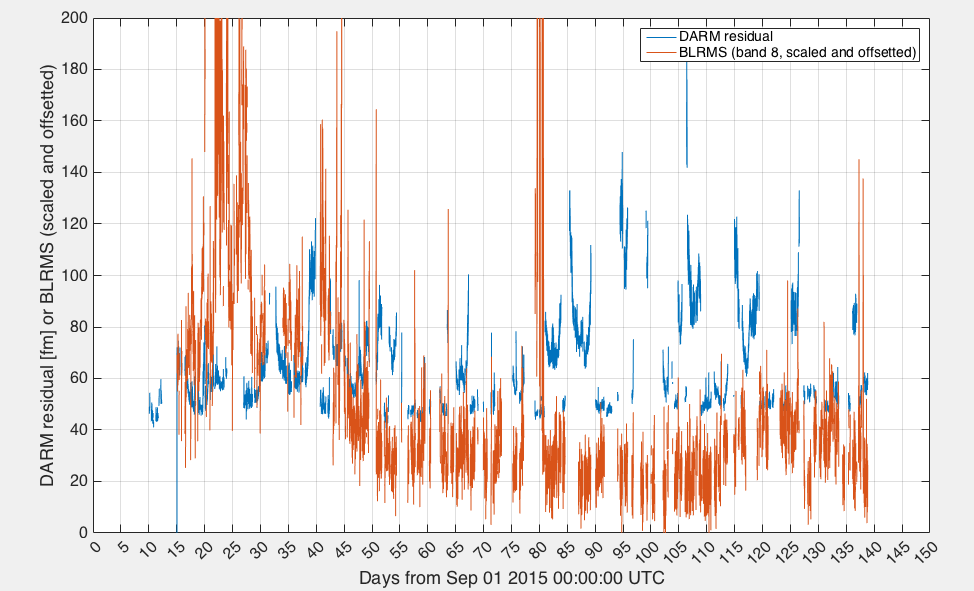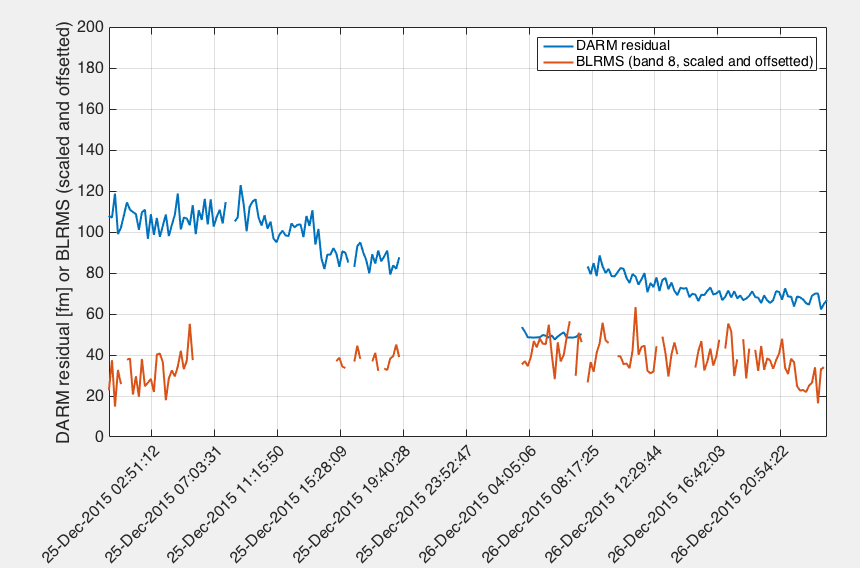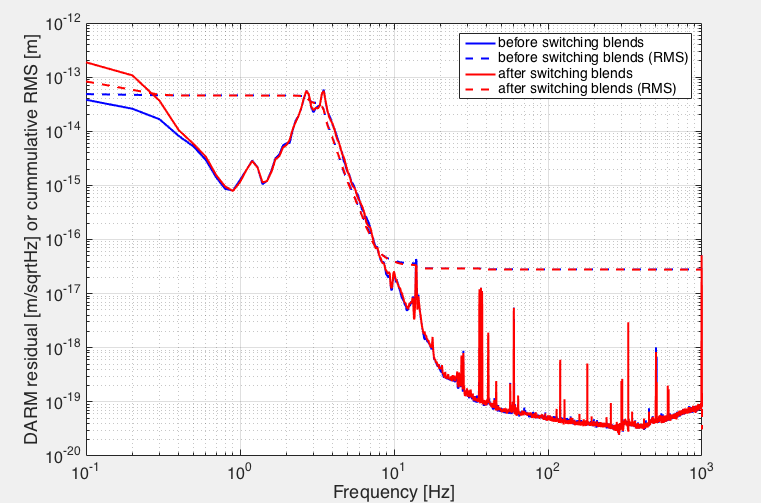This is a belated log. Some people suggested studying correlation between the cross correlated spectrum and DARM residual. So I looked into that.
I conclude that there is no clear correlation between the noise floor (or band limited rms) of the cross spectrum around 153 Hz and DARM residual.
[DARM residual and band limited rms]
Here is a plot showing how they evolved as a function of time throughout O1.
As seen in the plot, I do not see a clear correlation between the two data. Note that the band limited rms is the one for a frequency range of [150 156] and is artificially scaled and offsetted to make the plot more readable.
[DARM residual is a strong function of seismicity and ISI blend configurations]
Looking at the plot shown above, one can notice that there are some periods where the residual is small and steady, and the others are large by a factor of a few. This seems to be related to seismicity and the ISI blend configurations. Here I give one example study about it.
I looked into one particular interesting time where the EX ISI blend configuration was switched from one to another without losing lock. This is Dec. 26 2015 7:00-ish UTC (24483). The zoomed version of the above plot is shown below.
The lock stretch started at around 4:00 UTC of Dec 26 and the blend configuration was switched at around 7:00 UTC without losing lock. When the EX ISI blend was switched, the DARM residual increased by a factor of two or so. This is simply because of an increase of the low frequency motion. I made two spectra of the DARM residual, one for the time before the blend was switched and the other for the time right after the blend was switched.
From the plot, it is clear that the low frequency motion below 0.4 Hz increased after the switch while the rest of the frequency contents remained unchanged. So this tells us that the fluctuation of DARM residual is a strong function of seismicity and ISI blend configurations. Although I have not looked into other days throughly, I am guessing that the fluctuation we see in the DARM residual is just a measure of a combination of seismicity and ISIs' blend configurations. We know that the blend configurations were switched many times during O1 in order to stably lock the interferometer against winds and micro seismic.





